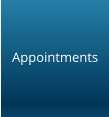
© Cambridge Orthopaedics - Cambridge; United Kingdom

Stiff elbow
There are several causes for a stiff elbow and each in turn needs its own particular treatment.
A stiff elbow may follow surgery, be part of a disease process, follow on from trauma, or being in a cast.
It takes a long time to get rid of the stiffness in an elbow.
If you force an elbow to move it will stiffen up further.
Five or ten minutes with a physiotherapist will not get the stiffness out of the elbow it is about continued
gentle stretching throughout the day.
You should find yourself a trigger, the number 1 song, a news or weather report or put a red dot on
your computer/ steering wheel, bathroom mirror.
Each time you see/ take note of your trigger you should gently stretch your elbow.
It is important to focus on all the movements of the elbow, not just bringing your hand to your mouth (flexion).
As instructed by your surgeon depending on how much force the elbow can take you can assist the movements with your other hand or a
rolled up magazine/ short stick.
Continued gentle stretching throughout the day is better than waking up and forcing it first thing in the morning.
Passive exercises and forcing the elbow either yourself or by forceful manipulation by a therapist is not a good idea.
Elbows tend to fight back if forced and stiffen up further, they may also develop Heterotopic ossification (extra bone) which will lead to a bony
block to further movement.
It is important to work on stretches to regain movement and strengthening to regain power.
It is important to work on all the movements and all the muscles.
Stretches
There are 4 principle movements in the elbow:
•
Flexion - bending your elbow, bringing your hand to your mouth
•
Extension - Straightening your arm/ elbow
•
Pronation - Twisting your forearm/ hand and wrist to show the back of your hands
•
Supination - Twisting your forearm/ hand and wrist to show your palm (asking for change)
Flexion
We are genetically programmed to get our hands to our mouths and as such flexion is often one of the first movements to return.
Depending on the cause of the stiffness, sometimes it is advisable to only work in straight lines, ie. not abducting the elbow and shoulder.
Let your arm rest by your side, focus on your thumb trying to bring your thumb to your mouth.
Avoid craning your neck forward.
Use the other hand to support and gently push your hand and thumb towards your mouth.
Extension
Extension often takes a long time to recover and the elbow may never fully straighten.
We spend most of our lives with the elbow slightly bent.
Slings often encourage us to keep the elbow bent preventing extension.
It is important to make a conscious effort to fully straighten the elbow, initially take your arm out of the sling/ collar and cuff, support it in your
other hand and gently allow it to straighten letting gravity straighten it gradually lowering it as comfort allows.
As time goes by spend time out of the sling with the arm hanging down by your side.
When sitting take it out of your lap and let it hang down over the side of the chair allowing gravity to work on it.
When permitted to take weight on the arm, begin first carrying a shopping bag with one tin of baked beans then two then three as the elbow
strengthens up. This will help gradually stretch it straight.
As a rule of thumb a little discomfort while you are doing a stretch is OK.
If it really hurts and aches that night and then the next day then you have probably done too much and need to come back a little on the
stretches/ work. Don't stop all together, just slow down a little.
"If it hurts you are doing too much if it doesn't you can do a little more." - Listen to your arm
Pronation
Pronation is the act of showing the back of your hand. With your upper arm and elbows by your side, flex the elbow 90° and turn the forearm to
show the back of your hand.
Supination
Supination is the act of asking for change.
With your upper arm and elbow by your side, twist your forearm so your palm faces upwards.
Strengthening
Depending on the primary problem strengthening exercises may be introduced. It is important to work on range of motion predominantly if
you have a stiff elbow.

© Cambridge Orthopaedics - Cambridge; United Kingdom
















